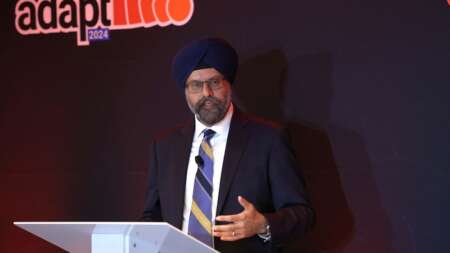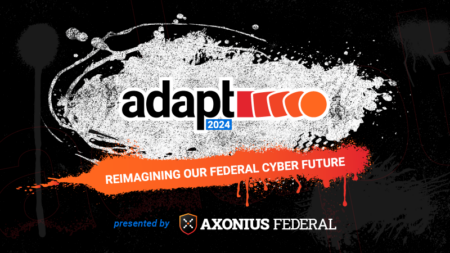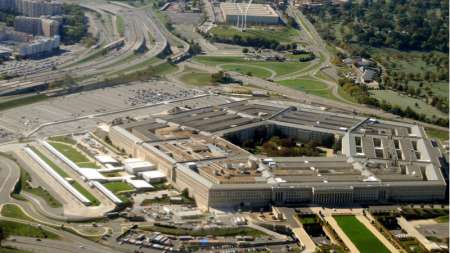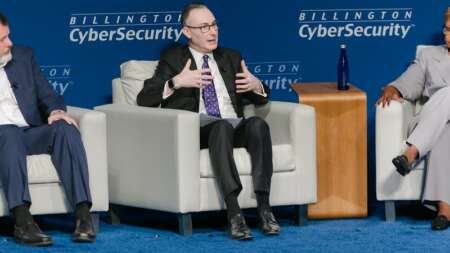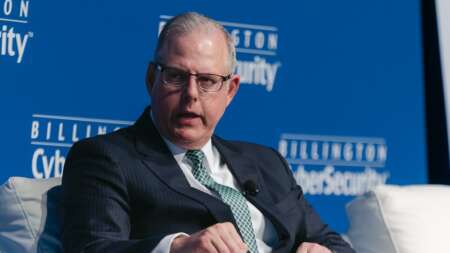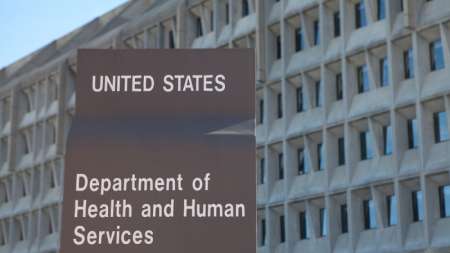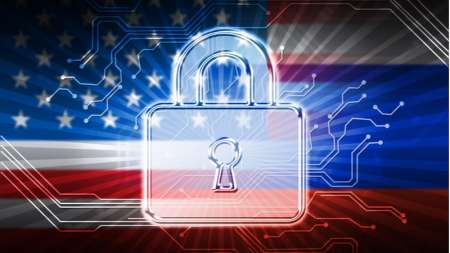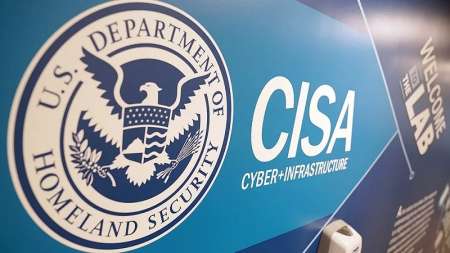The Defense Information Systems Agency (DISA) expects to roll out its Thunderdome program to 60 sites in fiscal year (FY) 2024 – thus far the agency has deployed the zero trust program to 23 sites, an agency spokesperson confirmed. […]
A review of the Defense Department’s component-level zero trust security implementation plans is painting a clearer picture of trends and challenges running through the three-dozen-plus plans – including the vital importance of proper funding for components, and achieving interoperability across component zero trust plans – to meet DoD’s 2027 zero trust deployment goal. […]
How do Federal cyber practitioners adapt to an increasingly complex attack surface? Where do Federal security leaders turn to reimagine the future cyber landscapes? Find answers to both of those questions at Adapt 2024: Reimagining Our Federal Cyber Future – a one-day event that brings together IT, cybersecurity, and operations leaders to unpack the complex security challenges that face U.S. government agencies. […]
The Department of Defense (DoD) is on track to meet its 2027 zero trust cybersecurity framework goal, top Pentagon officials said this week. […]
The Department of Defense (DoD) officially approved zero trust implementation plans from all of its components last month, and the agency is now looking to focus on “minimum viable solutions” for the plans by tackling specific security-related issues each year. […]
The Department of Defense (DoD) has officially approved zero trust implementation plans from all 41 of its components as it inches closer to its goal of implementing a zero trust architecture across the entire department by 2027. […]
As Federal agencies continue on their zero trust journeys, Federal officials on Thursday stressed the importance of being intentional with their cybersecurity tools and budgets in order to remain a step ahead of adversaries. […]
A top NASA official on Feb. 29 used a catastrophic visual to capture the challenge of securing both operational technology (OT) devices and IT in the push for zero trust. […]
The Department of Defense (DoD) is well on its way to implementing an enterprise-wide zero trust architecture following review of implementation plans from DoD organizations, the department’s zero trust lead said today, although the process has not been without its bumps in the road. […]
The head of IT at the Department of Justice (DoJ) today laid out how zero trust must be incorporated into the five strategic pillars of “good IT operations,” including enhancing cybersecurity and elevating the workforce. […]
It’s been two years since the White House sent marching orders to agencies on implementing key zero trust security initiatives. Join MeriTalk and Gigamon on Feb. 29 in Washington, D.C. for a holistic look at the government’s progress and how to secure the future of government. […]
While implementing a zero trust architecture in the Federal government can often feel like a compliance activity, cybersecurity experts on Tuesday stressed that it’s more than just meeting standards and requirements – it’s about protecting your intellectual property and people. […]
The Department of Defense’s (DoD) Chief Digital and AI Office (CDAO) is calling on industry to provide insight into commercial data-mesh capabilities to underpin the U.S. military’s future warfighting network. […]
A key step in achieving zero trust security is building a different kind of trust, a “cultural alignment” within agencies that allows employees to trust in the steps needed to proactively respond to threats, a top Department of Energy (DoE) official said on Oct. 24. […]
After a year of planning, military service branches and defense agencies have submitted their zero trust security implementation plans to the Department of Defense (DoD) zero trust team for evaluation, according to the department’s zero trust lead. […]
As the deadline quickly approaches for the military services to submit their respective zero trust execution plans, one thing is clear: the services are aggressively pushing to reach their zero trust goals. However, cyber experts across the military services agree that they must remain smart as they make moves toward their zero trust goals. […]
Department of Defense (DoD) Chief Information Officer (CIO) John Sherman said today that defense and military agencies must submit zero trust plans to his office in the coming weeks to be evaluated and to determine how they measure up to the DoD’s Zero Trust Strategy. […]
The U.S. Army has embarked on a three-phase zero trust journey to ensure it meets the Department of Defense’s (DoD) Zero Trust goal to implement a department-wide framework by 2027. […]
While zero trust security has become headline news for government agencies since 2021, the Department of the Air Force has been working and learning in that space for several years and is being guided by several roadmaps that incorporate zero trust principles on a strategic level, a senior Air Force tech official said this week. […]
Implementing a zero trust architecture is a must for all Federal agencies, but how that architecture is implemented relies heavily on the operational and business needs of an individual agency. […]
As Federal agencies ramp up their zero trust capabilities, a new report released today by security automation provider Swimlane finds that “67 percent of federal government agencies are confident or very confident they are prepared to meet the Zero Trust requirements laid out by the U.S. government.” […]
It’s no longer a question of whether Federal agencies should implement a zero trust model for cybersecurity, but what methods they should implement to get to that goal. […]
The Defense Information Systems Agency (DISA) awarded Booz Allen Hamilton big money to continue work on the agency’s zero trust network access and application security architecture, Thunderdome, according to a July 28 announcement. […]
Federal agencies have been tasked with implementing zero trust architectures to protect valuable systems, networks, and data from cyber threats. However, there is no one size fits all zero trust implementation plan, as Federal officials showed in discussing their agencies’ progress during a June 8 webinar hosted by ATARC. […]
With its new National Cybersecurity Strategy, the Biden administration is doubling down on moving the Federal government to a zero trust security architecture, following last year’s mandate to set specific zero trust goals by the end of fiscal year 2024. […]
The Department of Health and Human Services (HHS) Office of the Chief Information Officer (OCIO) is rolling out a new zero trust scorecard across the agency’s different operating divisions to accelerate zero trust security adoption and drive strategy across HHS. […]
To have quality data an agency first needs to have quality software, which means agencies must modernize and develop their software and that also requires implementing zero trust principles, according to an official from the Department of the Army. […]
With the migration to zero trust security architectures is in full swing in the Federal government, top agency technology executives shared their experience with effective strategies and technologies they have implemented thus far during an April 25 webinar organized by Federal News Network. […]
One of the Federal government’s top cybersecurity officials said today that the Biden administration is requesting roughly $12 billion in fiscal year (FY) 2024 funding in connection with efforts to roll out zero trust security across the entire government, and voiced concern about the fate of the security push if Congress acts to roll back government funding levels to FY2022 levels. […]
The Cybersecurity and Infrastructure Security Agency (CISA) today published an updated, second version of its Zero Trust Maturity Model that is guiding Federal agencies and other organizations along the path to adopting zero trust security architectures. […]


